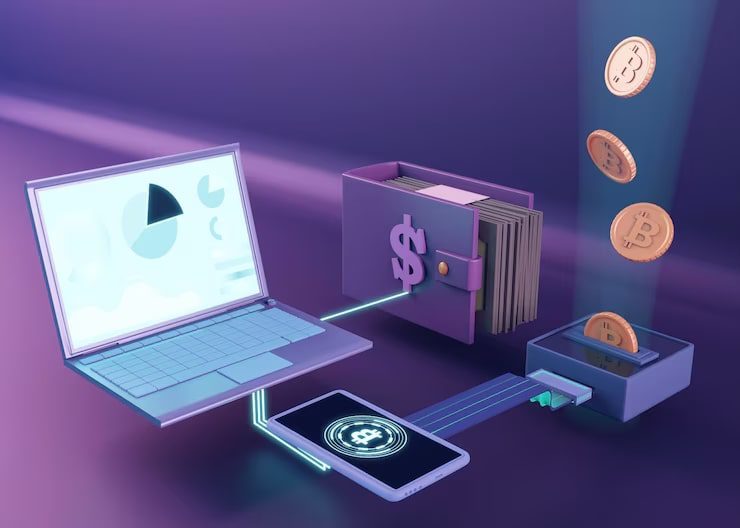Blockchain technology isn’t just a buzzword anymore. It’s the backbone of a digital revolution that’s transforming industries from finance to supply chain management. As we plunge deeper into 2024, understanding the evolution of blockchain technology is crucial for grasping how this innovation is reshaping our world.
The Dawn of Blockchain Technology
Blockchain technology first came into the spotlight with the introduction of Bitcoin in 2009. Created by the enigmatic Satoshi Nakamoto, Bitcoin’s underlying blockchain technology was a game-changer. It introduced the concept of a decentralized ledger where transactions were recorded in a secure, immutable way. This was a far cry from traditional, centralized financial systems where trust was placed in intermediaries.
At its core, blockchain technology is a distributed ledger that ensures data integrity through cryptographic hashing. It allows multiple parties to access the same data simultaneously without needing a central authority. This foundational principle set the stage for a myriad of applications beyond cryptocurrencies.
From Cryptocurrency to Smart Contracts
As blockchain technology gained traction, it quickly outgrew its original purpose. Enter Ethereum, launched in 2015 by Vitalik Buterin. Ethereum took blockchain technology to the next level by introducing smart contracts—self-executing contracts with the terms written directly into code. This innovation opened doors to decentralized applications (dApps) and decentralized finance (DeFi).
Smart contracts have become the backbone of various blockchain applications, automating processes and eliminating the need for intermediaries. This not only streamlines transactions but also reduces costs and enhances security. According to a 2023 report by Deloitte, the adoption of smart contracts could potentially save businesses up to $3 billion annually by reducing the need for legal fees and administrative costs.
Blockchain Technology: The Enterprise Takeover
While cryptocurrencies and smart contracts stole the spotlight, blockchain technology began making waves in enterprise settings. Companies across various sectors started exploring blockchain for its potential to enhance transparency and efficiency. IBM’s blockchain platform and the Hyperledger project are prime examples of how businesses are leveraging this technology to improve supply chain management, track product provenance, and streamline logistics.
In the supply chain sector alone, blockchain technology can provide real-time visibility into the movement of goods. This can significantly reduce fraud, errors, and delays. A study by Accenture found that blockchain technology could improve supply chain efficiency by up to 40%, making it a game-changer for industries dealing with complex logistics.
The Rise of Decentralized Finance (DeFi) and Non-Fungible Tokens (NFTs)
In recent years, the decentralization movement has taken blockchain technology to new heights. DeFi platforms leverage blockchain to recreate traditional financial services—such as lending, borrowing, and trading—without intermediaries.
Simultaneously, Non-Fungible Tokens (NFTs) have burst onto the scene, showcasing the versatility of blockchain technology. NFTs represent ownership of unique digital assets, from art to virtual real estate. The NFT market skyrocketed in 2021, with sales reaching $17.6 billion, according to DappRadar. This explosive growth underscores the potential of blockchain technology to create and trade digital assets in ways previously unimaginable.
The Challenges and Future Prospects
Even with its potential, blockchain technology comes with its own set of challenges. Issues such as scalability, energy consumption, and regulatory concerns continue to be areas of active research and debate. For instance, Bitcoin’s proof-of-work consensus mechanism has been criticized for its high energy consumption, prompting discussions about more sustainable alternatives.
However, the future of blockchain technology looks promising. Innovations like proof-of-stake and sharding are being developed to address scalability and energy efficiency. Additionally, as regulatory frameworks evolve, they are expected to provide clearer guidelines, fostering more widespread adoption.
Conclusion
Blockchain technology has evolved significantly since its origins with Bitcoin. From revolutionizing financial transactions to enabling smart contracts, DeFi, and NFTs, its impact on various sectors is undeniable. As we navigate the complexities and opportunities ahead, one thing is clear: blockchain technology is not just a passing trend but a transformative force with the potential to redefine how we interact with digital information and assets.
As we look to the future, staying informed about the latest developments in blockchain technology will be crucial. This innovation is not just shaping the future; it’s actively building it, one block at a time.







